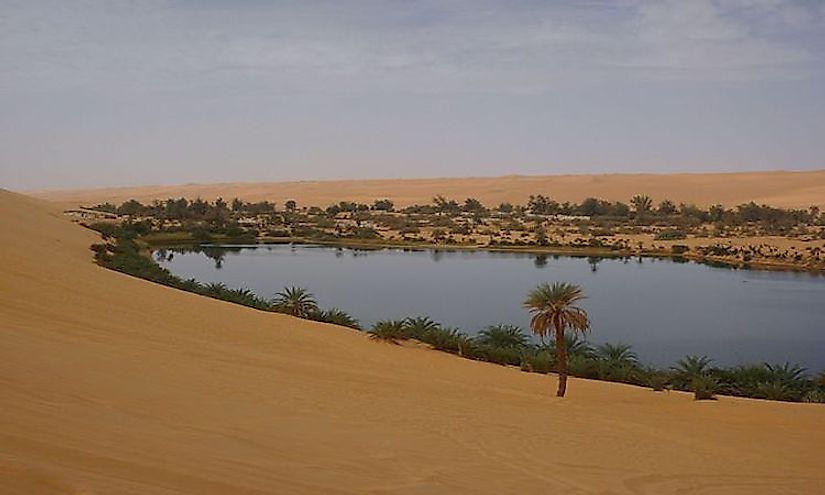What Is An Oasis?

What Is An Oasis?
An oasis is an unexpected water source located in the desert. This water provides the much-needed relief in the middle of the desert and allows for the growth of vegetation. This isolated vegetation is often how an oasis is identified. Animals often find shelter in an oasis as well, feeding on the surrounding plants and drinking the water supply. If the oasis is large enough, human settlements may also crop up nearby.
Around the world, the Sahara Desert is home to some of the largest underground water supplies. Estimates suggest there are as many as 90 oases located there. However, the Sahara is so large that traveling between oases sites can often take days, or even weeks. Historically, this has caused oases to become important stops along trade and transportation routes. Oases provide a place to fill up on food and water supplies. Because of this importance, many political, economic, and military forces have tried to control the flow of goods and people into and out of oases. This control gives these groups power over the trade that comes into the area.
How Is An Oasis Formed?
Oases are created when underground aquifers or rivers reach the surface of land. This can occur by natural pressure or by man-made wells. Scientists have also identified some thunderstorms as both the cause and source of some oases. Thunderstorms brings heavy rain water that becomes trapped in the air pockets of a layer of impermeable rock, or the water collects in volcanic and subsurface faults and dikes.
How do plants begin growing in the middle of the desert? This is where migratory birds play a critical role. Migrating birds are attracted to the water source as they make their way across the desert. While gathered at the site, the birds excrete seeds that they have consumed along the migration route. The stable water source allows these seeds to germinate, take root, and grow. Over time, these plants produce more seeds and the vegetation continues to multiply - within the confines of the water source.
Humans And Oases
Because oases provide a fertile area in the middle of an otherwise infertile ground, humans have been attracted to these sites for hundreds of years. Once a settlement springs up at an oasis site, the people living there must carefully control water use. This is usually done via wells and irrigation systems. By irrigating the land, inhabitants are able to produce and harvest several crops, including cotton, olives, figs, dates, corn, wheat, citrus fruit, and apricots. Where agriculture is concerned, date palm trees are particularly helpful. This is because the date palms grow higher than other plants, forming an upper layer that provides shade for the plants below. This shade keeps the sun from burning other crop plants and helps prevent the scarce water from evaporating quickly.
Environmental Threats To Oases
One of the biggest threats to the oasis environment is actually its location. Desert sands blowing into the oasis water supply both pollutes the available water and fills the source. Too much sand around the crops can also reduce necessary nutrients in the soil, thereby reducing the harvest. Additionally, overuse of water for irrigation purposes threatens the supply by reducing the water available for other uses. Date palm trees, previously mentioned, also help to prevent sand pollution. The community often plants these trees around the outer edges of the oasis to block the strong, sand-carrying winds.











